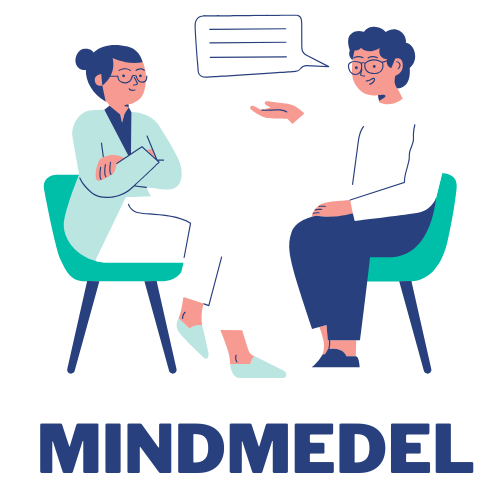Unlocking Childhood Understanding: A Deep Dive into Piaget Theory and Stages of Cognitive Development
Have you ever wondered how children learn, grow, and make sense of the world? Jean Piaget’s groundbreaking theory on cognitive development provides answers to this age-old question. As a pioneering psychologist, Piaget revolutionized our understanding of how children acquire knowledge, adapt to their environments, and mature intellectually.
In this blog, I’ll guide you through Piaget’s Theory and Stages of Cognitive Development, providing insights that are as useful to parents and teachers as they are fascinating to anyone interested in psychology.
5 Key Takeaways:
- Piaget’s stages offer a clear roadmap of how children think and learn.
- Cognitive development is tied to both age and individual experiences.
- Understanding these stages improves parenting and teaching strategies.
- Piaget’s theories continue to shape educational practices globally.
- Applying these insights fosters better communication with children.
What is Piaget’s Theory of Cognitive Development?
The Foundation of Cognitive Development
Cognitive development is the study of how children acquire, process, and use information. Jean Piaget, a Swiss psychologist, devoted his life to studying children and their intellectual growth. He believed that children are not just smaller versions of adults but are active thinkers who construct their understanding of the world through experience and interaction.
Key Concepts of Piaget’s Theory
To fully appreciate Piaget’s stages, it’s essential to understand the foundational concepts he introduced:
- Schema: Think of schemas as mental frameworks that help us organize and interpret information. For example, a child might develop a schema for “dog” after seeing a few different types of dogs.
- Assimilation and Accommodation:
- Assimilation: Incorporating new information into existing schemas (e.g., calling a cat a “dog” because it fits their idea of a furry animal).
- Accommodation: Adjusting schemas to fit new information (e.g., learning to differentiate between a dog and a cat).
- Equilibration: The process of balancing assimilation and accommodation to achieve understanding.
The Four Stages of Piaget’s Cognitive Development
Piaget outlined four stages of cognitive development, each marked by distinct milestones and abilities. Let’s explore these in depth.
Stage 1 – Sensorimotor Stage (Birth to 2 Years)
- Key Milestones:
- Development of object permanence (understanding that objects continue to exist even when out of sight).
- Exploration of the environment through sensory and motor activities.
- Examples: Playing peek-a-boo or dropping objects repeatedly to observe their fall.
- Applications:
- Encourage sensory learning through toys that stimulate touch, sight, and sound.
- Offer opportunities for safe exploration, like crawling in a child-proofed space.
Stage 2 – Preoperational Stage (2 to 7 Years)
- Key Traits:
- Symbolic thinking (e.g., using a stick as a pretend sword).
- Egocentrism: Difficulty understanding others’ perspectives.
- Animism: Belief that inanimate objects have feelings.
- Limitations: Struggle with conservation (e.g., understanding that the quantity of liquid remains the same when poured into a different-shaped container).
- Activities to Foster Growth:
- Encourage role-playing games and storytelling.
- Use visual aids to explain concepts like size and quantity.
Stage 3 – Concrete Operational Stage (7 to 11 Years)
- Major Developments:
- Logical reasoning begins to develop.
- Understanding of conservation and categorization.
- Real-Life Examples: Solving math problems, organizing objects by size or color.
- Parental/Teacher Tips:
- Introduce science experiments that demonstrate cause and effect.
- Use puzzles and strategy games to encourage problem-solving.
Stage 4 – Formal Operational Stage (12 Years and Up)
- Abstract Thinking: Adolescents begin to think about hypothetical scenarios and abstract concepts.
- Critical Thinking: Skills like debating and forming independent opinions emerge.
- Educational Implications:
- Encourage discussions on complex topics like ethics or politics.
- Foster creativity through projects that require planning and analysis.
| Key Takeaway | Explanation |
| Piaget’s stages simplify how children’s cognitive abilities evolve over time. | The stages offer a clear roadmap to understanding the progression of cognitive growth in children. |
| The theory provides actionable advice for parenting and teaching. | Piaget’s insights help tailor strategies to support learning and development at each stage. |
| Critiques have sparked new research and adaptations in psychology. | Feedback on Piaget’s theory has inspired modern updates and deeper explorations in cognitive science. |
| Modern applications ensure Piaget’s relevance in today’s world. | The theory is adapted to fit contemporary educational and technological contexts. |
| Understanding these principles fosters better relationships with children. | Knowing the stages enhances communication and interaction, promoting stronger bonds. |
Understanding Piaget’s Theory in Parenting
Parenting can feel overwhelming, especially when children display behaviors that seem confusing or unpredictable. Piaget’s theory helps parents decode these behaviors by linking them to specific developmental stages. Let’s look at how parents can apply these principles in everyday life:
Tailoring Parenting to Cognitive Stages
Piaget’s stages of development—Sensorimotor, Preoperational, Concrete Operational, and Formal Operational—highlight what children can and cannot understand at different ages. Here’s how parents can adapt:
| Stage | Age Range | Parenting Focus |
| Sensorimotor | Birth to 2 Years | Encourage sensory exploration, provide safe spaces for crawling and touching, and play peek-a-boo to build object permanence. |
| Preoperational | 2 to 7 Years | Engage in imaginative play, use simple explanations for abstract ideas, and encourage role-playing games. |
| Concrete Operational | 7 to 11 Years | Introduce logic-based activities like puzzles and experiments, and help them organize information with categories. |
| Formal Operational | 12 Years and Up | Discuss abstract concepts, foster debates on ethical issues, and encourage problem-solving through real-world scenarios. |
Practical Parenting Tips Based on Piaget’s Insights
- Be Patient with Egocentrism: During the Preoperational stage, children may struggle to see things from another’s perspective. Instead of forcing them to “understand,” model empathy and gently explain others’ viewpoints.
- Provide Hands-On Learning: Kids in the Concrete Operational stage thrive when they can manipulate objects. Use building blocks, science kits, or baking activities to teach concepts.
- Encourage Abstract Thinking for Teens: Adolescents in the Formal Operational stage need opportunities to challenge their critical thinking. Discuss current events or complex topics to stimulate their growing intellect.
Piaget’s Theory in Education
Educational systems around the world have been influenced by Piaget’s insights, especially in designing age-appropriate curricula and teaching strategies. His theory emphasizes the importance of understanding where a child is in their cognitive journey and teaching accordingly.
How Teachers Can Apply Piaget’s Theory
- Stage-Appropriate Learning
Design lesson plans that align with Piaget’s stages:- For younger children (Sensorimotor and Preoperational stages), focus on visual aids, storytelling, and hands-on activities.
- For older students (Concrete and Formal Operational stages), incorporate experiments, problem-solving tasks, and discussions about abstract ideas.
- Active Learning
Piaget believed children learn best through active engagement with their environment.- Use interactive tools like manipulatives for math.
- Organize group projects to encourage collaboration.
- Build on Prior Knowledge
- Use scaffolding to help students link new information to existing knowledge.
- Encourage students to ask questions and explore answers independently.
Practical Educational Strategies Based on Piaget’s Theory
| Teaching Principle | Example Activities |
| Concrete to Abstract Learning | Start with physical objects (e.g., counting blocks) before moving to abstract numbers. |
| Interactive Exploration | Allow students to conduct simple experiments (e.g., mixing colors) to understand cause and effect. |
| Encourage Hypothetical Thinking | Ask older students to predict outcomes (e.g., “What would happen if…?”) to engage their critical thinking. |
Benefits of Applying Piaget’s Theory
Adopting Piaget’s principles in parenting and education creates an environment where children feel supported, understood, and challenged appropriately. Below are some specific benefits:
- For Parents:
- Better communication with children at their developmental level.
- Enhanced ability to guide and nurture without frustration.
- A stronger parent-child bond due to empathetic understanding.
- For Educators:
- Improved student engagement by tailoring lessons to cognitive abilities.
- Increased learning outcomes through hands-on and interactive teaching methods.
- A more supportive classroom environment where students feel confident to explore and learn.
How Piaget’s Theory Addresses Common Challenges
- Understanding Egocentrism in Young Children
- Challenge: “Why doesn’t my child understand sharing?”
- Solution: Realize that egocentrism is a normal part of the Preoperational stage. Instead of reprimanding, model sharing and patience.
- Dealing with Teenagers’ Abstract Questions
- Challenge: “Why does my teenager suddenly question everything I say?”
- Solution: This is a hallmark of the Formal Operational stage. Encourage open discussions and support their intellectual curiosity.
- Teaching Complex Subjects
- Challenge: “How do I make math or science engaging for my students?”
- Solution: Use Piaget’s Concrete Operational insights to make lessons interactive. Introduce experiments, visual aids, and real-life applications.
Comparisons with Other Theories of Cognitive Development
Vygotsky vs. Piaget
- Focus on Stages vs. Social Interaction:
Piaget proposed that cognitive development occurs in universal, sequential stages driven by independent exploration and maturation. In contrast, Vygotsky emphasized the role of social interaction and cultural influences in shaping cognitive development, suggesting that learning is a collaborative process. - Key Concepts:
- Piaget: Introduced schemas, assimilation, accommodation, and equilibration, highlighting how children construct knowledge individually through interactions with their environment.
- Vygotsky: Proposed the Zone of Proximal Development (ZPD), where learning happens most effectively with the guidance of a more knowledgeable other (e.g., teacher, parent, peer). He also highlighted the importance of language as a tool for thought and learning.
- Role of Adults:
- Piaget viewed adults as facilitators who provide opportunities for discovery but allow children to learn autonomously.
- Vygotsky believed that adults and peers play a crucial role in scaffolding children’s learning, providing support that gradually decreases as the child gains independence.
- Cultural Influence:
Piaget focused on universal stages that apply to all children regardless of cultural differences, whereas Vygotsky emphasized that culture significantly shapes cognitive development, including what is learned and how.
Erikson’s Stages vs. Piaget’s Stages
- Cognitive vs. Emotional-Social Development:
- Piaget: Concentrated on the development of thinking and reasoning, emphasizing logical structures and abstract reasoning as children grow.
- Erikson: Focused on psychosocial development, mapping out eight stages where individuals face specific emotional and social challenges, such as trust vs. mistrust or identity vs. role confusion.
- Complementary Nature:
Erikson’s stages often align with Piaget’s, as cognitive milestones influence emotional and social growth. For instance:- During Piaget’s Preoperational Stage, children’s growing imagination aligns with Erikson’s stage of Initiative vs. Guilt, where children learn to assert themselves through play.
- In the Formal Operational Stage, abstract thinking aligns with Erikson’s Identity vs. Role Confusion, as teenagers explore their sense of self and beliefs.
- Role of Environment:
Piaget saw development as internally driven and relatively independent of external social factors. Erikson, on the other hand, placed a strong emphasis on social interactions, relationships, and cultural expectations as shaping development.
By understanding these differences and overlaps, educators and psychologists can take a holistic approach, combining cognitive, emotional, and social perspectives to better support development across various stages.
Piaget Theory: 5 Astonishing Facts You Need to Know
Jean Piaget’s theory of cognitive development revolutionized how we understand children’s intellectual growth. Here are five astonishing facts about his groundbreaking work:
- Four Clear Stages: Piaget identified four stages of cognitive development: Sensorimotor, Preoperational, Concrete Operational, and Formal Operational, each with distinct milestones.
- Schemas as Building Blocks: He introduced the concept of schemas, mental frameworks that help children process and organize information.
- Active Learning: Piaget emphasized that children are active learners, constructing knowledge through exploration and interaction.
- Universal Application: His theory is used globally in education to create age-appropriate teaching strategies.
- Critiques Sparked Innovation: While some aspects of his theory are debated, it continues to inspire modern psychological research and educational practices.
Understanding these key points can help educators, parents, and psychologists foster a child’s intellectual development effectively.
Piaget’s Theory in Action
Applying Piagets theory to parenting and education is about understanding and respecting a child’s developmental stage. When we meet children where they are cognitively, we empower them to learn and grow at their own pace. By fostering curiosity, patience, and creativity, you’ll not only help children reach their full potential but also create stronger connections along the way.
Common Thoughts about Piaget’s Theory and Stages of Cognitive Development
- How accurate is Piaget’s theory today?
While some aspects have been updated, the core principles remain influential. - Can cognitive development be accelerated?
Providing enriched environments can enhance learning, but natural progression is essential. - What role does culture play in cognitive growth?
Culture shapes the experiences that influence schema development and learning.
Criticism and Modern Applications of Piaget’s Theory
Criticisms
While Piaget’s theory is revolutionary, it’s not without its flaws:
- Underestimation of Children: Some studies suggest children can achieve certain milestones earlier than Piaget claimed.
- Overemphasis on Stages: Cognitive development may be more fluid and less stage-like.
Modern Relevance
Despite these critiques, Piaget’s work remains highly relevant. Today, educators and psychologists adapt his principles to suit modern contexts, such as integrating technology into learning environments.
Tables and Visual Aids
| Stage | Age Range | Key Milestones | Practical Activities |
| Sensorimotor | Birth to 2 Years | Object permanence, sensory exploration | Peek-a-boo, sensory toys |
| Preoperational | 2 to 7 Years | Symbolic thinking, egocentrism | Role-playing, storytelling |
| Concrete Operational | 7 to 11 Years | Logical reasoning, conservation | Science experiments, puzzles |
| Formal Operational | 12 Years and Up | Abstract thinking, critical thinking | Debates, creative projects |
Conclusion
Jean Piaget’s theory provides invaluable insights into how children think and learn. By understanding these stages, parents, teachers, and psychologists can better support children’s growth and help them reach their full potential.
Let’s embrace Piaget’s legacy by fostering environments where children can thrive cognitively and emotionally. Share this blog with someone who might benefit from these insights!





